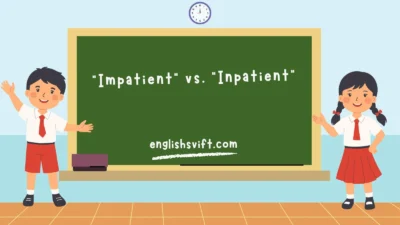English is full of tricky phrases that spark debate, and “moreso” vs “more so” is one of those sneaky ones that even seasoned writers sometimes get wrong. At first glance, both versions look acceptable, but when you dig deeper into grammar rules, history, and expert advice, the truth becomes clear.
If you’ve ever paused mid-sentence, unsure whether to write moreso as one word or more so as two, this guide is for you. We’ll explore the correct spelling, show plenty of examples, and compare this phrase to other controversial spellings like color vs colour or favor vs favour. By the end, you’ll be confident in using the right form every single time.
Understanding the Debate: “Moreso” vs “More So”
The confusion stems from how naturally “moreso” rolls off the tongue. People often assume it should be a single word because it sounds like one. However, grammar experts almost universally agree that “more so” is correct.
| Term | Status | Notes |
| More so | ✅ Correct & Standard | Widely accepted in formal and informal writing. |
| Moreso | ❌ Non-standard | Considered incorrect in formal writing. Seen as informal or poetic. |
Why the confusion?
- Spoken English often merges words for speed.
- Social media and texting encourage shortcuts, leading to unconventional spellings.
- Language evolution allows non-standard spellings to gain traction over time, but not all reach universal acceptance.
Correct Spelling: Why “More So” Is the Standard Form
Grammatically, “more so” functions as two separate words:
- More: an adverb meaning “to a greater degree or extent.”
- So: a substitute (or anaphor) that refers back to something already mentioned.
📌 Example:
- She was upset yesterday, but she is more so today.
Here, so replaces “upset,” making the sentence clear and elegant.
According to Oxford English Dictionary (OED) and Merriam-Webster, moreso is not recognized as a standard English spelling. This is similar to how alot isn’t considered correct for a lot.
Is “Moreso” Ever Acceptable in English?
While “moreso” is labeled incorrect in reputable dictionaries, it does appear in casual writing:
- Poetry and song lyrics (for stylistic flair).
- Marketing campaigns where unconventional spelling is intentional.
- Informal online chats, instant messaging, and social media.
However, in professional, academic, or formal contexts, “moreso” can harm credibility.
If you’re unsure, stick with “more so.”
Historical Development of the Term: From the Late 20th Century to Now
“More so” has been in English for hundreds of years, while “moreso” only started appearing in texts around the late 20th century.
A Google Ngram graph shows “moreso” barely registers in published works, while “more so” remains dominant:
| Term | First Noted Usage | Popularity Trend |
| More so | 1700s | Steady, dominant usage. |
| Moreso | Late 1900s | Rare, informal, not widely recognized. |
Language purists argue that “moreso” complicates an otherwise simple grammatical structure.
Comparing “Moreso” with Other Controversial Spellings
English is full of spelling debates:
| Word Pair | Notes |
| Color vs Colour | U.S. vs U.K. spelling. Both correct regionally. |
| Favor vs Favour | Same as above; regional preference. |
| More so vs Moreso | Only “more so” is formally correct. |
| Analyze vs Analyse | U.S. vs British spelling distinction. |
Unlike regional spelling variations, “moreso” is not regionally recognized anywhere.
Formal vs Informal Writing: Which Version to Choose
In formal emails, essays, business writing, or journalism, always use “more so.”
In informal contexts, “moreso” might appear, but it could still feel sloppy.
✅ Safe choice: “More so”
❌ Risky choice: “Moreso” (could seem careless)
Examples of Correct Usage in Sentences
Here are simple examples to cement your understanding:
| Sentence | Explanation |
| John was upset yesterday, but he’s more so today. | “So” replaces “upset.” |
| Kevin is happy, and Marcus is more so. | “So” replaces “happy.” |
| Prices skyrocketed in the city, even more so than in the suburbs. | “So” replaces “skyrocketed.” |
| She loves chocolate cake, but cheesecake more so. | “So” replaces “loves.” |
Common Mistakes and How to Avoid Them
- ❌ He was angry, moreso than usual.
✅ He was angry, more so than usual. - ❌ Moreso, she refused to go.
✅ More so, she refused to go.
Remember: Two words are correct.
The Role of Anaphors and Stylistic Emphasis
The word “so” acts as an anaphor, standing in for a repeated adjective or clause. This prevents redundancy and keeps writing elegant.
📌 Without “so”: She was upset yesterday, but she was upset even more today.
📌 With “so”: She was upset yesterday, but she is more so today.
Regional Preferences: U.S., U.K., Australia, and Beyond
Unlike color/colour or favor/favour, “moreso” is not a British or American variation.
- U.S., U.K., Australia, New Zealand: All prefer “more so.”
- No major style guide endorses “moreso.”
A Linguistic Look: Why “More So” Sounds Natural
“More so” is two words because English avoids unnecessary word merging.
- “So” acts like a pronoun, referring back to earlier parts of the sentence.
- Combining them breaks this grammatical rule, which is why “moreso” feels awkward.
Grammar Tips from Experts and Style Guides
Style guides like APA, Chicago Manual of Style, and MLA recommend avoiding moreso entirely.
“When in doubt, choose clarity over novelty. ‘More so’ is correct; ‘moreso’ is not recognized.” – Grammar.com
Synonyms and Alternatives to “More So”
| Synonym/Alternative | Example Sentence |
| Especially | She was tired, especially after the long flight. |
| Even more | The suburbs are expensive, even more than downtown. |
| Particularly | He’s particularly skilled in football. |
| All the more | She was all the more determined to succeed. |
The Impact of Digital Communication on Word Choice
Digital communication influences spelling habits:
- Texting, social media, and messaging encourage shortcuts.
- Some writers adopt “moreso” because it looks simpler.
- Over time, informal words can gain popularity (but not always legitimacy).
“Moreso” in Pop Culture, Marketing, and Media
Companies sometimes bend grammar rules for branding:
- A campaign might use “Moreso” to sound modern or edgy.
- Social media trends may popularize misspellings temporarily.
But these tactics are stylistic, not grammatical.
A Table Comparing “Moreso” and “More So” in Context
| Criteria | More so (Correct) | Moreso (Incorrect) |
| Formal Writing | ✅ Recommended | ❌ Avoid |
| Academic Papers | ✅ Safe | ❌ Credibility loss |
| Informal Chats | ✅ Fine | ⚠️ Occasionally used |
| Style Guides Approval | ✅ Yes | ❌ No |
| Dictionary Recognition | ✅ Yes | ❌ No |
Professional Writing Standards: Academic and Corporate Perspectives
Professional editors stress clarity, formality, and adherence to standard grammar. Using “moreso” in business communication can make content feel unpolished or careless.
How Spellcheckers and Autocorrect Affect Word Choices
Most writing software (Word, Google Docs, Grammarly) underlines moreso as a spelling error, reinforcing that “more so” is correct.
Avoiding Redundancy: Using “More So” for Clarity
Instead of repeating adjectives, “more so” lets your sentence breathe:
- He’s talented, but his brother is even more so.
The Future of Language: Could “Moreso” Become Accepted?
English evolves, but for now, “moreso” remains unofficial. Future dictionaries may list it as an informal variant if it gains traction.
Real-Life Examples: Famous Quotes and Contexts
- “She’s a great football player, but her brother is more so.
- “The city is expensive, even more so in the suburbs.”
Quick Reference Table: Safe Choices for Writers
| Situation | Correct Form |
| Essays, Exams, Reports | More so |
| Creative Writing | Either (style-dependent) |
| Social Media Posts | Either (casual) |
| Business Documents | More so |
Practical Writing Tips to Master “More So”
- ✅ Always write it as two words.
- ✅ Use it to avoid repetition.
- ❌ Don’t rely on “moreso” in serious work.
- ✅ Use grammar tools to double-check spelling.
FAQs
Q1: Is “moreso” in any dictionary?
A: It appears in some informal online sources, but major dictionaries don’t recognize it.
Q2: Why do people write “moreso”?
A: Habit, informality, and the way it sounds in speech.
Q3: Can I use “moreso” in poetry or creative writing?
A: Yes, for stylistic effect. But avoid it in academic or professional work.
Q4: Is “more so” always two words?
A: Yes. It’s a phrase, not a compound word.
Q5: Will “moreso” ever become standard?
A: Possibly, but currently it’s non-standard and best avoided in formal writing.
Conclusion
The debate over “moreso” vs “more so” is more about grammar accuracy than personal preference. While English evolves and informal spellings pop up online, “more so” remains the correct, safe, and professional choice.
Whether you’re writing an email, crafting a research paper, or polishing marketing copy, clarity and credibility matter. Stick to “more so” for polished communication, and save “moreso” for casual or stylistic contexts.
Language trends come and go, but good grammar stands the test of time.



